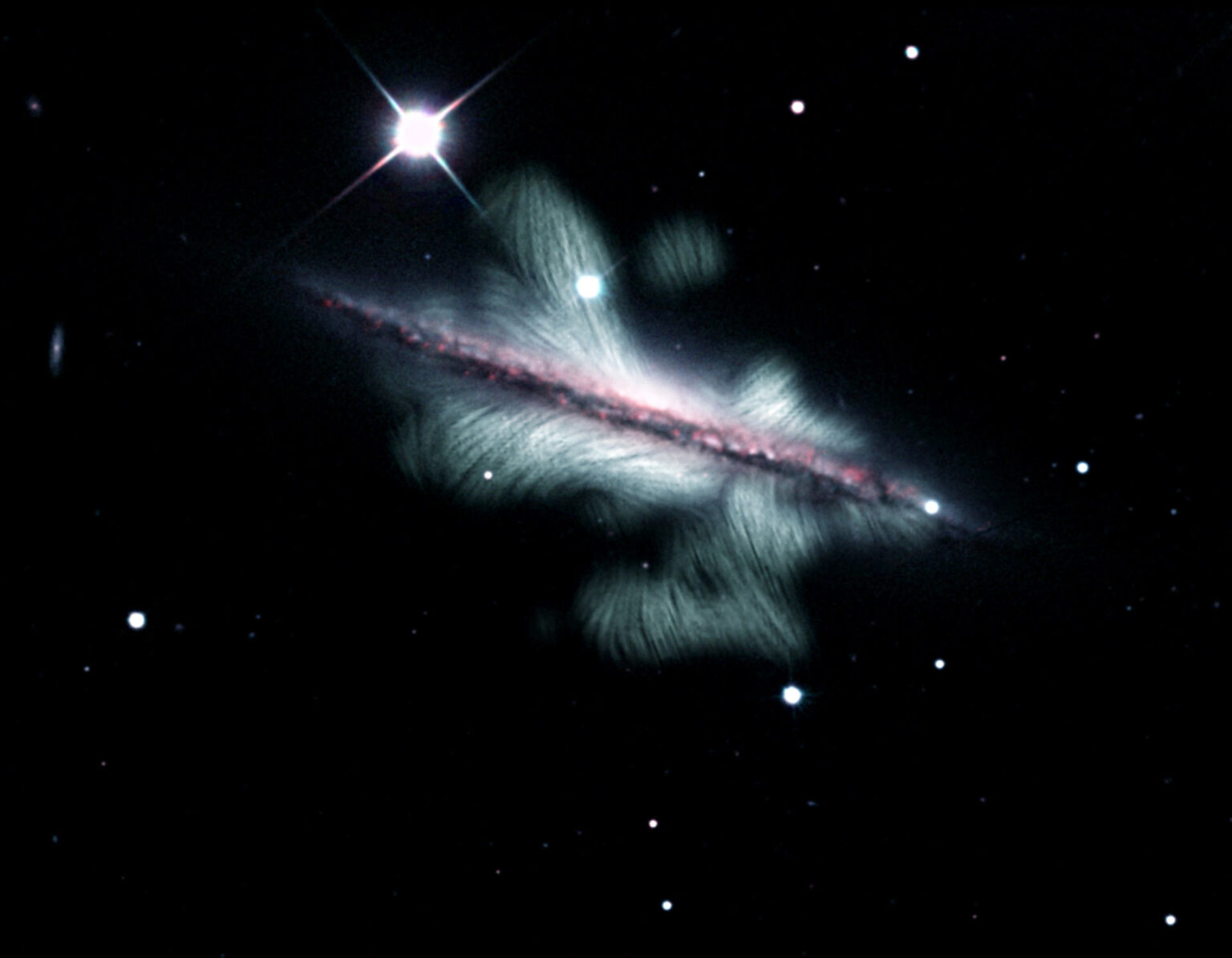NGC 4217 is a nearby spiral galaxy with intense star formation. Scientists have recently observed it with radio telescopes and discovered that a giant radio bubble is rising above the center of this star system.

Galaxy NGC 4217
Recently, a team of astronomers led by Volker Heesen at the University of Hamburg in Germany used the Jansky Very Large Array (JVLA) and the Low-Frequency Array (LOFAR) to take a closer look at the galaxy NGC 4217 in the radio band.
NGC 4217 is a well-known star system to scientists and is located 61.6 million light-years away from us. This is relatively close compared to the visible part of the Universe. This galaxy is a spiral type galaxy, like the Milky Way. We see it mostly from the edge.
This galaxy is also known for active star formation. Young stars are born and die in it much more often than in the Milky Way. In addition, a radio halo — a region emitting electromagnetic waves longer than visible and infrared light — has been detected around it at a distance of 16,000 light years.
Radio bubble
NGC 4217 has a lot of dust and gas clusters that generate all that radiation. But now scientists have decided to take a closer look at it. For this purpose, the LOFAR and JVLA radio telescopes were used. They mainly operated at the 144 MHz frequency.
With these observations, a component was discovered that researchers hadn’t previously seen. It is a bubble visible only in the radio band that extends 65,000 light-years from the stellar disk above its center.
It is clear that this is actually a region of very rarefied but highly ionized gas. Astronomers have seen such formations not for the first time. In particular, similar bubbles rise above the center of the Milky Way. But then observations show that its altitude above the plane of NGC 4217 is 19,200 light years for the 144 MHz frequency and 9,400 light years for the 3 MHz frequency
This is noticeably more than is usually seen in such cases. The main theory of scientists is that it is the large number of supernovae in the galaxy that provides additional “inflation” of bubbles. But they also recognize that such a mechanism cannot fully explain their size.
According to phys.org


